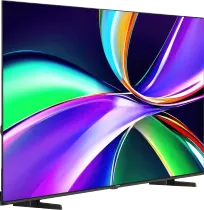
It is now official – LG Display has begun mass production of the first monitor using RGB Tandem OLED technology. Furthermore, there are even more ambitious plans on the horizon: an OLED with a refresh rate of 540 Hz and even 720 Hz is set to be released in 2025.
Previously there were leaks, but now everything is confirmed. The production of the new monitor panel follows the path of the television RGB Tandem OLEDs that have been integrated into the LG G5, Panasonic Z95B, and Philips OLED910/950. In short: LG makes the panels, and the rest of the world buys them.
To start: 27 inches, QHD, 280 Hz and 1500 nits
The first panel for monitors is 27 inches, with a resolution of 2560x1440, a refresh rate of 280 Hz and a brightness of up to 1500 nits (in a 1.5% window). It is clearly aimed at the gaming segment and competing with Samsung's QD-OLEDs.
Asus and Gigabyte have already announced their models based on this panel – they are set to hit the market in 2025. The panel itself also features an improved anti-glare coating, which – according to LG – blocks 99% of light reflections, both from outside and from within the panel itself.
540 Hz and 720 Hz – absurdly fast OLEDs
In addition, LG announced that it has developed an entirely new OLED panel: 540 Hz at QHD resolution. This is more than Samsung's QD-OLED, which reaches up to 500 Hz. But that's not all – the same panel can also operate in 720 Hz mode at 720p resolution. Response time? 0.03 ms. It is difficult to find anything comparable on the market.
LG emphasises that exceeding 500 Hz has previously been an insurmountable barrier due to a decline in image quality. Now – they claim – they have managed to circumvent this with a new algorithm and DFR technology (Dynamic Frequency & Resolution). This allows the user to choose whether they prefer higher resolution or absurdly fast refresh rates.
The new panel is also expected to meet the highest VESA ClearMR 21000 standards. LG has not yet revealed whether the 540/720 Hz version is also based on RGB Tandem OLED, but Asus has practically confirmed it. Production is set to start in the second half of 2025.
Source: www.flatpanelshd.com
 Katarzyna Petru
Katarzyna Petru













